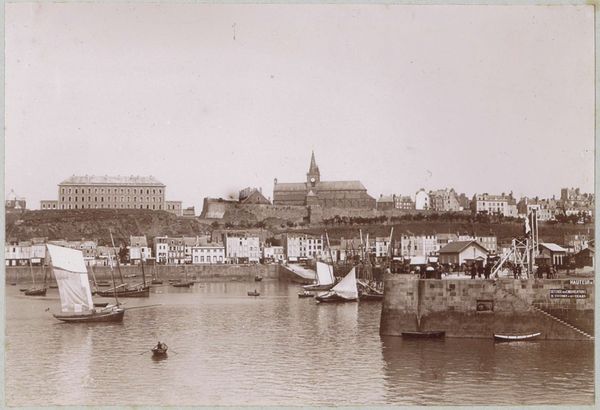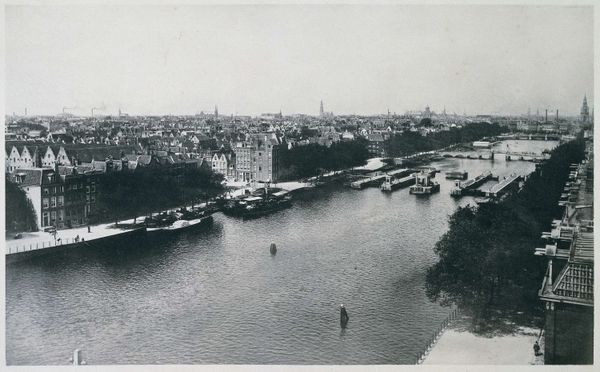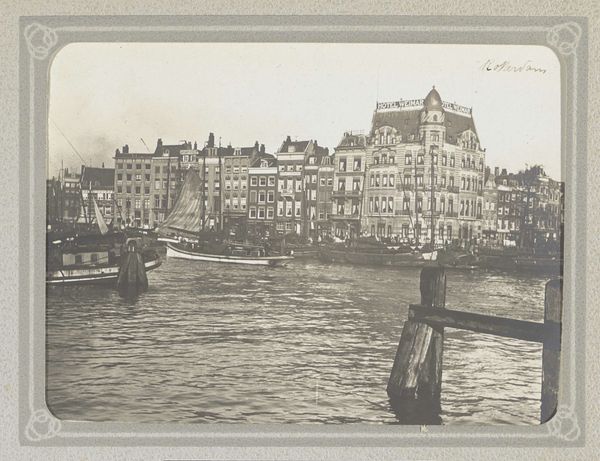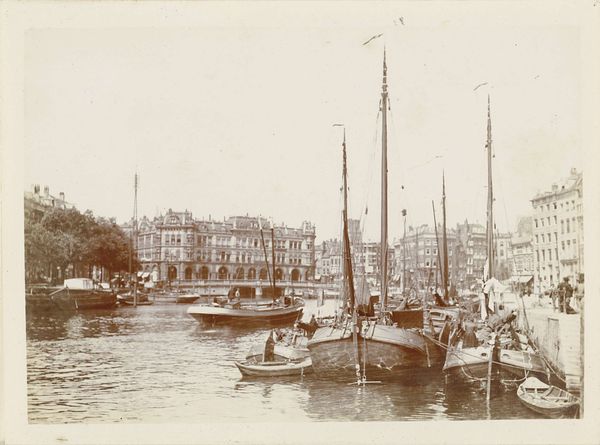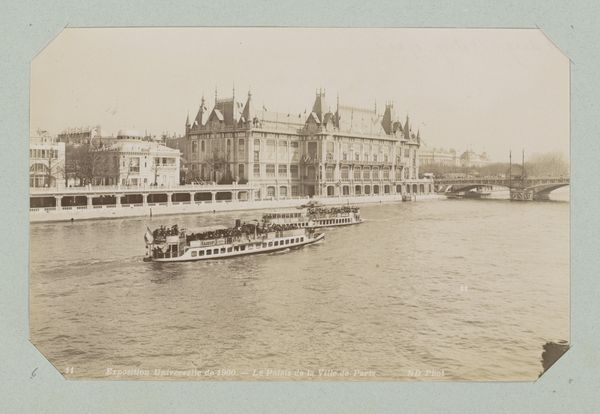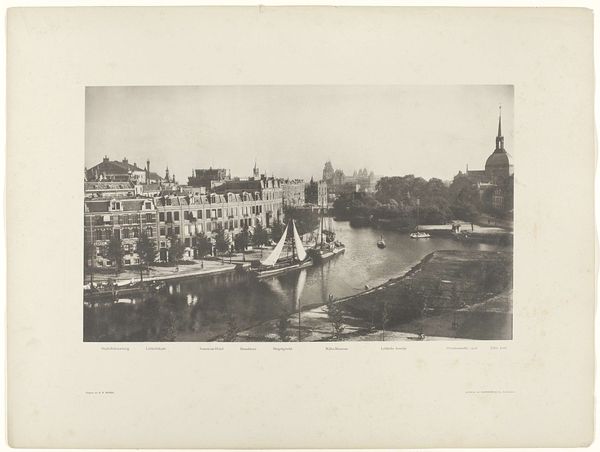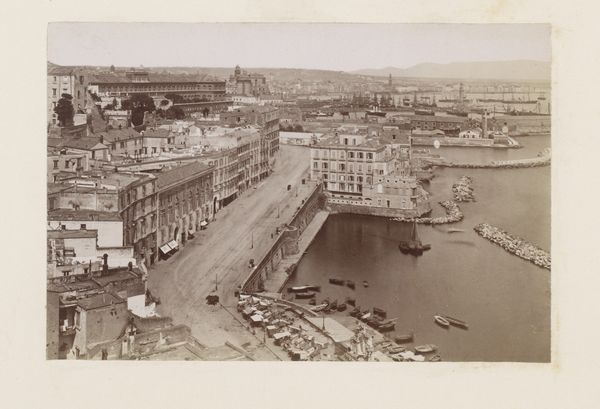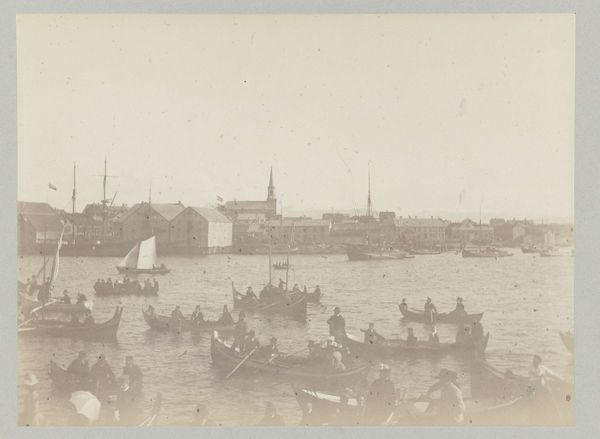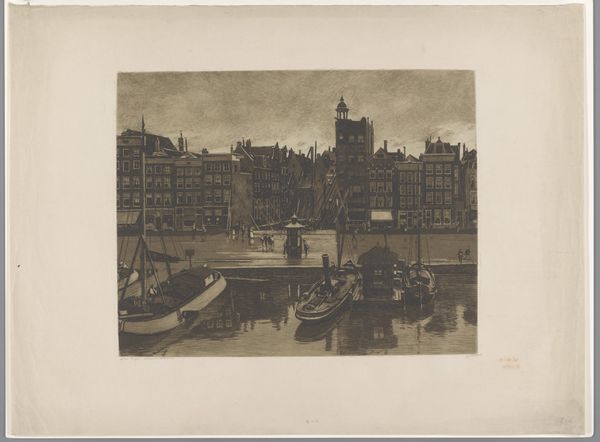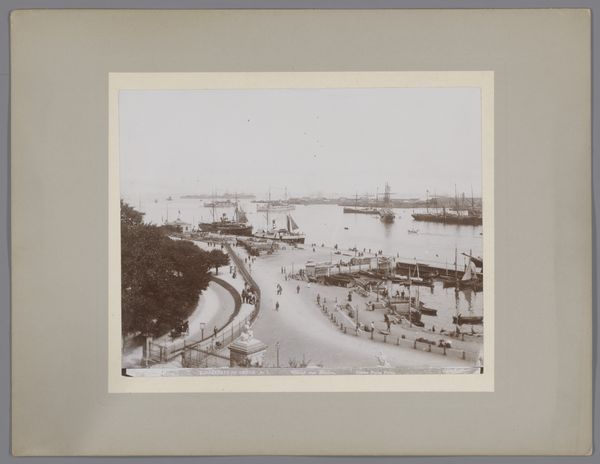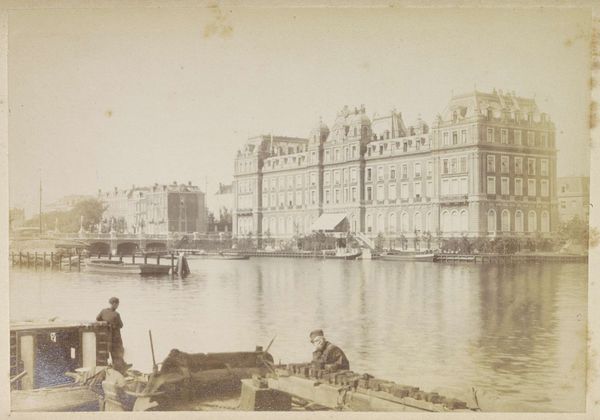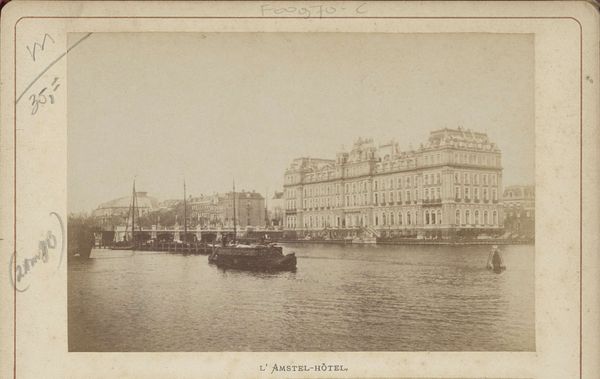
Roeiers op de Amstel (tussen Stadhouderskade en het Amstel Hotel), Amsterdam 1900 - 1920
0:00
0:00
photography, gelatin-silver-print
#
print photography
#
pictorialism
#
landscape
#
outdoor photo
#
archive photography
#
photography
#
gelatin-silver-print
#
cityscape
Dimensions: height 208 mm, width 288 mm, height 250 mm, width 345 mm
Copyright: Rijks Museum: Open Domain
Editor: So this gelatin silver print, titled *Roeiers op de Amstel* or *Rowers on the Amstel River* was taken sometime between 1900 and 1920 by E. van Elfrinkhoff. It gives a fascinating snapshot of a leisurely day on the water. I'm curious, how would you interpret this bustling scene in its historical context? Curator: This photograph captures a moment of bourgeois leisure in Amsterdam at the turn of the century. The Amstel River, seen here teeming with rowboats, was a key social space. What does it tell us about the politics of imagery during this period? Who was included, and perhaps more importantly, who was excluded from this picture of Dutch society? Editor: That's a really good question. I’m not sure. What I do see are almost exclusively white people, likely middle or upper class based on their attire. So, probably not a very diverse crowd? Curator: Precisely. These images were often carefully curated to project a specific vision of national identity and social harmony. Consider the role of institutions like photography clubs and art salons in shaping the aesthetic values and social norms reflected in works like this. How do you think these kinds of photographs contributed to constructing ideas about Dutch identity? Editor: It does seem like a deliberate effort to portray a specific social group enjoying themselves in a quintessentially Dutch setting. Almost like visual propaganda? Curator: One could certainly argue that! Photography, particularly pictorialism which is visible here, was being used to reinforce particular social narratives. By studying the museums and collections that preserved and promoted this work, we see that this image has come to define Dutchness during that era. Editor: I never thought about photography that way. I will certainly look closer at that element next time. Thanks for sharing your perspective! Curator: My pleasure. It's important to consider the context surrounding artistic expression and its effects on our shared society.
Comments
No comments
Be the first to comment and join the conversation on the ultimate creative platform.

